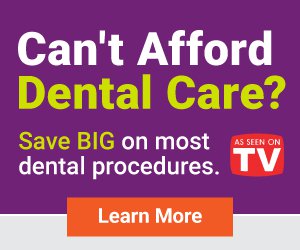What to Expect From a Dental Cleaning
Professional dental cleanings are crucial for proper oral hygiene. No matter how well you brush your teeth at home, an expert has more skill and knowledge. There are a lot of benefits to getting your teeth cleaned professionally. But most importantly, it can prevent a lot of serious illnesses. Here’s everything you should expect from a dental cleaning.
It’s never too late to start getting dental cleanings. Whether you’re getting over your fear of the dentist or you just haven’t had the time, it’s good that you’re thinking about getting cleanings. Make it a regular habit, and you’ll reap the benefits of proper oral hygiene in no time.
How to Prepare for a Dental Cleaning
Technically, you don’t have to do anything before your dental cleaning. If you regularly brush and floss your teeth, you don’t have anything to worry about. But every dentist and dental hygienist appreciates it if you brush your teeth before your appointment as a courtesy.
If you have a preexisting condition (or you suspect cavities or gum disease), make sure you inform the professional who’s cleaning your teeth.
The 6 Steps of a Professional Dental Cleaning
Usually, a dental hygienist or a dentist completes your professional dental cleaning. It usually takes 30-60 minutes for the procedure. These are the steps you can expect as soon as you land in the dentist chair.
1. Physical Examination
First, your dental hygienist will examine the current state of your teeth and gums. They use a small mirror to check the hard-to-see areas of your mouth. This step is very important to recognize potential problems.
The dental hygienist will note any signs of gingivitis, cavities, or other potential concerns. If they notice a major problem, they’ll call in the dentist to discuss potential treatments.
2. Scaling: Removing Plaque and Tartar
Once the dental hygienist finishes your examination, they’ll start the dental cleaning with scaling. Using a tool called a scaler, they remove any tartar buildup and plaque from your teeth. You’ll hear scraping sounds, but this is completely normal.
The more plaque and tartar buildup you have, the longer this step will take.
Plaque is harmful bacteria on your teeth. You can easily remove it with common home remedies. But if you don’t, it can easily develop into tartar. Tartar is a very hard material that’s fused to your teeth. Only a dental hygienist or dentist should remove it.
3. Polishing With Gritty Toothpaste
Next, the dental hygienist will use gritty toothpaste and an electric toothbrush to brush your teeth. The grinding noise you’ll hear during this process may be alarming. But, it’s just the sound of the leftover tartar disappearing.
Using harsh toothpaste like this is great to polish your teeth twice a year. But using it every day would wear down your enamel quickly. You should always be gentler on your teeth when you’re brushing them at home.
4. Flossing at a Dental Cleaning
No matter how well and how regularly you floss at home, nothing beats the flossing during a professional dental cleaning. Let the expert go through your teeth to reach problematic spots and to get rid of leftover tartar.
5. Rinsing
After flossing, you’ll probably have to rinse your mouth. This helps get rid of all the debris from plaque and tartar that got removed. (Don’t be surprised at multiple rinsings during a dental cleaning.)
6. Fluoride Treatment
The last step of a dental cleaning is fluoride treatment. Fluoride is a chemical that helps protect your enamel. Most kinds of toothpaste contain this ingredient. But, a professional fluoride treatment is more effective.
The dental hygienist will place a foamy gel or a sticky paste into a mouthpiece that fits over your teeth. Then, you’ll have to bite onto this and hold it in your mouth for a minute. Additionally, the dental hygienist will also use fluoride varnish. They’ll paint it on your teeth with a brush. Saliva makes this varnish harden, and it will protect your teeth for the next couple of months.
After Your Dental Cleaning
Your dental hygienist will tell you how long you need to wait before you eat or drink again. Usually, you can eat or drink right away. But, you may not want to. A lot of people enjoy the minty freshness of dental cleaning and want to preserve that feeling.
Be aware that your gums may be sensitive after the procedure. And eating hot or cold foods may cause you discomfort. So, try to avoid them until your teeth are less sensitive.
You can immediately schedule your next dental cleaning appointment for 6 months in advance. Until then, make sure you keep your oral hygiene routine up. Brush and floss at least twice every day. Scraping your tongue also contributes positively to your oral health.
Does a Dental Cleaning Hurt?
A lot of people are scared of dental cleanings. The prodding, the strange noises, and the discomfort can alarm anyone. But for most people, a dental cleaning isn’t painful at all.
However, some circumstances can make your dental cleaning hurt. If you have sensitive or inflamed gums, you may feel more discomfort than others. Cavities, gum disease, and tooth decay can also make dental cleanings quite painful.
It’s important to communicate your pain to your dental hygienist. They can take a break, avoid the painful area, or examine the source of the pain and see what can be done to alleviate it.
Why Professional Dental Cleaning Is Important
There are a lot of benefits to professional dental cleanings. And there are a lot of risks to not getting one. So, if you think that your brushing at home is good enough, you’re in for a surprise. Even the fear of the dentist isn’t enough justification to skip your dental cleaning.
1. A Dental Hygienist Has Better Products and Tools
Your toothbrush and toothpaste aren’t medical grades. Even if you do brush your teeth with the proper technique and pressure, a dental hygienist can still do it better. Not to mention those who don’t brush their teeth well without even realizing it.
2. An Expert Can Recognize Problems Earlier
Surprise! You can’t look inside your mouth. And looking in the mirror can only get you so far. A dental expert has the skill to see every part of your mouth and the knowledge to recognize early signs of problems.
3. You Can’t Remove Tartar at Home
If you allow plaque to build up, tartar forms on your teeth. This hard material gets fused to your teeth and doesn’t scrub off with a toothbrush. Instead, you need the dental hygienist’s scaler to get rid of it. But, you also need their skillset. Trying to remove tartar yourself can cause serious injuries or harm your enamel.
And the last thing you want to do when cleaning your teeth to promote your overall dental health is create problems.
4. Bad Dental Hygiene Can Lead to Illness and Even Death
Let’s say don’t mind the built-up tartar on your teeth. That tartar will eat into your teeth. Next thing you know, you’ll have cavities. And you’ll probably only notice the cavities when they become extremely painful.
If you’re lucky, you may only need a filling or root canal surgery. But, you may actually lose your tooth.
Bad oral hygiene can also lead to gum disease. Untreated gum disease has severe complications. This inflammation affects more than just your gums. It can spread to your lymph nodes, and even up to your eye.
Ultimately, untreated gum disease can give you a stroke or a heart attack. By then, your bad oral hygiene became a life-threatening condition. It’s easy to prevent that by going to the dentist for cleanings regularly.
5. Dental Hygienist Are Very Nice
This one’s for those who are afraid of the dentist. The dental hygienist will do everything possible to make your dental cleaning as smooth as possible. No matter how scary the prodding and the sounds are, they’ll take good care of you.
How Often Should You Have a Professional Dental Cleaning?
Experts recommend that you get a professional dental cleaning twice a year. That means that you should make an appointment every six months. But, it ultimately depends on your dental health.
Some studies suggest that people who aren‘t at risk of gum disease can get a dental cleaning once a year as well. But, even for them, twice a year can be beneficial.
Those at the risk of gum disease or other oral health problems need to get a dental cleaning at least twice a year. This can significantly prevent and treat their dental problems.
Save Money on Your Next Dental Cleaning
A lot of people hesitate to get a dental cleaning because of the cost. Although they’re not afraid of the dentist, they’re wary of the bill that follows. While every dental practice has different prices, an average adult dental cleaning can be pricey.
Luckily, you don’t have to pay that much for a dental cleaning if you have a Carefree Dental Card. The Carefree Dental discount plan unlocks huge savings at participating dentists.
With a Carefree Dental Card, you could save between 15% - 50%*, per visit, in most instances on dental cleanings at participating providers. Get a thorough dental cleaning (and peace of mind) without worrying about the price when you sign up for a Carefree Dental Card today!
The Carefree Dental blog is not meant to be a substitute for professional medical advice, diagnosis, or treatment. The text and pictures within the content are intended for information purposes only. Readers should consult with a licensed dentist or healthcare professional before seeking treatment.
The Carefree Dental Card is not insurance and Carefree Dental is not an insurance provider.





